Gcode G代码详解(2)
时间:2013-03-05 14:44 来源:未知 作者:中国3d打印网 阅读:次
|
reprap wiki上面的Gcode说明 G-code From RepRapWiki (Redirected from Gcode) Jump to: navigation, search Contents [hide] 1 Introduction 2 RepRap G Code Fields 3 Comments 4 Individual commands 4.1 Checking 4.1.1 N and * 4.2 Buffered G Commands 4.2.1 G0: Rapid move 4.2.2 G1: Controlled move 4.2.3 G28: Move to Origin 4.3 Unbuffered G commands 4.3.1 G4: Dwell 4.3.2 G20: Set Units to Inches 4.3.3 G21: Set Units to Millimeters 4.3.4 G90: Set to Absolute Positioning 4.3.5 G91: Set to Relative Positioning 4.3.6 G92: Set Position 4.4 Unbuffered M and T commands 4.4.1 M0: Stop 4.4.2 M17: Enable/Power all stepper motors 4.4.3 M18: Disable all stepper motors 4.4.4 M20: List SD card 4.4.5 M21: Initialise SD card 4.4.6 M22: Release SD card 4.4.7 M23: Select SD file 4.4.8 M24: Start/resume SD print 4.4.9 M25: Pause SD print 4.4.10 M26: Set SD position 4.4.11 M27: Report SD print status 4.4.12 M28: Begin write to SD card 4.4.13 M29: Stop writing to SD card 4.4.14 M40: Eject 4.4.15 M41: Loop 4.4.16 M42: Stop on material exhausted 4.4.17 M43: Stand by on material exhausted 4.4.18 M80: ATX Power On 4.4.19 M81: ATX Power Off 4.4.20 M84: Stop idle hold 4.4.21 M92: Set axis_steps_per_unit 4.4.22 M101 Turn extruder 1 on Forward 4.4.23 M102 Turn extruder 1 on Reverse 4.4.24 M103 Turn all extruders off 4.4.25 M104: Set Extruder Temperature (Fast) 4.4.26 M105: Get Extruder Temperature 4.4.27 M106: Fan On 4.4.28 M107: Fan Off 4.4.29 M108: Set Extruder Speed 4.4.30 M109: Set Extruder Temperature 4.4.31 M110: Set Current Line Number 4.4.32 M111: Set Debug Level 4.4.33 M112: Emergency Stop 4.4.34 M113: Set Extruder PWM 4.4.35 M114: Get Current Position 4.4.36 M115: Get Firmware Version and Capabilities 4.4.37 M116: Wait 4.4.38 M117: Get Zero Position 4.4.39 M118: Negotiate Features 4.4.40 M119: Get Endstop Status 4.4.41 M126: Open Valve 4.4.42 M127: Close Valve 4.4.43 M128: Extruder Pressure PWM 4.4.44 M129: Extruder pressure off 4.4.45 M140: Bed Temperature (Fast) 4.4.46 M141: Chamber Temperature (Fast) 4.4.47 M142: Holding Pressure 4.4.48 M143: Maximum hot-end temperature 4.4.49 M160: Number of mixed materials 4.4.50 M203: Record Z adjustment 4.4.51 M226: Gcode Initiated Pause 4.4.52 M227: Enable Automatic Reverse and Prime 4.4.53 M228: Disable Automatic Reverse and Prime 4.4.54 M229: Enable Automatic Reverse and Prime 4.4.55 M230: Disable / Enable Wait for Temperature Change 4.4.56 M240: Start conveyor belt motor 4.4.57 M241: Stop conveyor belt motor 4.4.58 M245: Start cooler 4.4.59 M246: Stop cooler 4.4.60 M300: Play beep sound 4.4.61 T: Select Tool 5 Proposed EEPROM configuration codes 6 Replies from the RepRap machine to the host computer 7 Proposal for sending multiple lines of G-code 7.1 Problem to solve Introduction This page describes the G Codes that the RepRap firmware uses and how they work. The list of what can be done is extensible. But check this page first, and add your extension here first before you implement it. A typical piece of GCode as sent to a RepRap machine might look like this: N3 T0*57 N4 G92 E0*67 N5 G28*22 N6 G1 F1500.0*82 N7 G1 X2.0 Y2.0 F3000.0*85 N8 G1 X3.0 Y3.0*33 The meaning of all those symbols and numbers (and more) is explained below. TO find out which specific gcode/s are implemented in any given firmware, please see the Firmware_features page. (For the technically minded, the end of line is marked by both a <nl> and a <cr>. If you want to manually enter GCodes in your reprap using the Arduino Serial interface, make sure to select "Both NL & CR" on the bottom of the screen.) This isn't accurate, firmware accepts single <nl> as well as single <cr>, or combinations thereof. Hosts should accepts all four combinations as well. --Traumflug 09:34, 20 April 2011 (UTC) RepRap G Code Fields This section explains the letter-preceded fields. The numbers in the fields are represented by nnn. Numbers can be integers, or can contain a decimal point, depending on context. For example an X coordinate can be integer (X175) or fractional (X17.62), whereas trying to select extruder number 2.76 would make no sense. Letter Meaning Gnnn Standard GCode command, such as move to a point Mnnn RepRap-defined command, such as turn on a cooling fan Tnnn Select tool nnn. In RepRap, tools are extruders Snnn Command parameter, such as the voltage to send to a motor Pnnn Command parameter, such as a time in milliseconds Xnnn An X coordinate, usually to move to Ynnn A Y coordinate, usually to move to Znnn A Z coordinate, usually to move to Innn Parameter - not currently used Jnnn Parameter - not currently used Fnnn Feedrate in mm per minute. (Speed of print head movement) Rnnn Parameter - not currently used Qnnn Parameter - not currently used Ennn Length of extrudate in mm. This is exactly like X, Y and Z, but for the length of filament to extrude. It is common for newer stepper based systems to interpret ... Better: Skeinforge 40 and up interprets this as the absolute length of input filament to consume, rather than the length of the extruded output. Nnnn Line number. Used to request repeat transmission in the case of communications errors. *nnn Checksum. Used to check for communications errors. Comments G Code comments: N3 T0*57 ;This is a comment N4 G92 E0*67 ; So is this N5 G28*22 Will be ignored by RepRap, as will blank lines. But it's better to strip these out in the host computer before the lines are sent. This saves bandwidth. Individual commands Checking N and * Example: N123 [...G Code in here...] *71 These are the line number and the checksum. The RepRap firmware checks the checksum against a locally-computed value and, if they differ, requests a repeat transmission of the line of the given number. You can leave both of these out - RepRap will still work, but it won't do checking. You have to have both or neither though. The checksum "cs" for a GCode string "cmd" (including its line number) is computed by exor-ing the bytes in the string up to and not including the * character as follows: int cs = 0; for(i = 0; cmd[i] != '*' && cmd[i] != NULL; i++) cs = cs ^ cmd[i]; cs &= 0xff; // Defensive programming... and the value is appended as a decimal integer to the command after the * character. The RepRap firmware expects line numbers to increase by 1 each line, and if that doesn't happen it is flagged as an error. But you can reset the count using M110 (see below). Buffered G Commands The RepRap firmware stores these commands in a ring buffer internally for execution. This means that there is no (appreciable) delay while a command is acknowledged and the next transmitted. In turn, this means that sequences of line segments can be plotted without a dwell between one and the next. As soon as one of these buffered commands is received it is acknowledged and stored locally. If the local buffer is full, then the acknowledgment is delayed until space for storage in the buffer is available. This is how flow control is achieved. G0: Rapid move Example: G0 X12 In this case move rapidly to X = 12 mm. In fact, the RepRap firmware uses exactly the same code for rapid as it uses for controlled moves (see G1 below), as - for the RepRap machine - this is just as efficient as not doing so. (The distinction comes from some old machine tools that used to move faster if the axes were not driven in a straight line. For them G0 allowed any movement in space to get to the destination as fast as possible.) G1: Controlled move Example: G1 X90.6 Y13.8 E22.4 Go in a straight line from the current (X, Y) point to the point (90.6, 13.8), extruding material as the move happens from the current extruded length to a length of 22.4 mm. RepRap does subtle things with feedrates. Thus: G1 F1500 G1 X90.6 Y13.8 E22.4 Will set a feedrate of 1500 mm/minute, then do the move described above at that feedrate. But G1 F1500 G1 X90.6 Y13.8 E22.4 F3000 Will set a feedrate of 1500 mm/minute, then do the move described above accelerating to a feedrate of 3000 mm/minute as it does so. The extrusion will accelerate along with the X, Y movement so everything stays synchronized. RepRap thus treats feedrate as simply another variable (like X, Y, Z, and E) to be linearly interpolated. This gives complete control over accelerations and decelerations in a way that ensures that everything moves together and the right volume of material is extruded at all points. The first example shows how to get a constant-speed movement. The second how to accelerate or decelerate. Thus G1 F1500 G1 X90.6 Y13.8 E22.4 F3000 G1 X80 Y20 E36 F1500 Will do the first movement accelerating as before, and the second decelerating from 3000 mm/minute back to 1500 mm/minute. To reverse the extruder by a given amount (for example to reduce its internal pressure while it does an in-air movement so that it doesn't dribble) simply use G1 to send an E value that is less than the currently extruded length. G28: Move to Origin Example: G28 This causes the RepRap machine to move back to its X, Y and Z zero endstops, a process known as "homing". It does so accelerating, so as to get there fast. But when it arrives it backs off by 1 mm in each direction slowly, then moves back slowly to the stop. This ensures more accurate positioning. If you add coordinates, then just the axes with coordinates specified will be zeroed. Thus G28 X0 Y72.3 will zero the X and Y axes, but not Z. The actual coordinate values are ignored. Unbuffered G commands The following commands are not buffered. When one is received it is stored, but it is not acknowledged to the host until the buffer is exhausted and then the command has been executed. Thus the host will pause at one of these commands until it has been done. Short pauses between these commands and any that might follow them do not affect the performance of the machine. G4: Dwell Example: G4 P200 In this case sit still doing nothing for 200 milliseconds. During delays the state of the machine (for example the temperatures of its extruders) will still be preserved and controlled. G20: Set Units to Inches Example: G20 Units from now on are in inches. G21: Set Units to Millimeters Example: G21 Units from now on are in millimeters. (This is the RepRap default.) G90: Set to Absolute Positioning Example: G90 All coordinates from now on are absolute relative to the origin of the machine. (This is the RepRap default.) G91: Set to Relative Positioning Example: G91 All coordinates from now on are relative to the last position. G92: Set Position Example: G92 X10 E90 Allows programming of absolute zero point, by reseting the current position to the values specified. This would set the machine's X coordinate to 10, and the extrude coordinate to 90. No physical motion will occur. Unbuffered M and T commands M0: Stop Example: M0 The RepRap machine finishes any moves left in its buffer, then shuts down. All motors and heaters are turned off. It can be started again by pressing the reset button on the master microcontroller. See also M112. M17: Enable/Power all stepper motors Example: M17 M18: Disable all stepper motors Example: M18 Disables stepper motors and allows axis to move 'freely.' M20: List SD card Example: M20 All files in the root folder of the SD card are listed to the serial port. This results in a line like: ok Files: {SQUARE.G,SQCOM.G,} The trailing comma is optional. Note that file names are returned in upper case, but - when sent to the M23 command (below) they must be in lower case. This seems to be a function of the SD software. Go figure... M21: Initialise SD card Example: M21 The SD card is initialised. If an SD card is loaded when the machine is switched on, this will happen by default. SD card must be initialised for the other SD functions to work. M22: Release SD card Example: M22 SD card is released and can be physically removed. M23: Select SD file Example: M23 filename.gco The file specified as filename.gco (8.3 naming convention is supported) is selected ready for printing. M24: Start/resume SD print Example: M24 The machine prints from the file selected with the M23 command. M25: Pause SD print Example: M25 The machine pause printing at the current position within the file selected with the M23 command. M26: Set SD position Example: M26 Set SD position in bytes (M26 S12345). M27: Report SD print status Example: M27 Report SD print status. M28: Begin write to SD card Example: M28 filename.gco File specified by filename.gco is created (or overwritten if it exists) on the SD card and all subsequent commands sent to the machine are written to that file. M29: Stop writing to SD card Example: M29 filename.gco File opened by M28 command is closed, and all subsequent commands sent to the machine are executed as normal. M40: Eject If your RepRap machine can eject the parts it has built off the bed, this command executes the eject cycle. This usually involves cooling the bed and then performing a sequence of movements that remove the printed parts from it. The X, Y and Z position of the machine at the end of this cycle are undefined (though they can be found out using the M114 command, q.v.). See also M240 and M241 below. M41: Loop Example: M41 If the RepRap machine was building a file from its own memory such as a local SD card (as opposed to a file being transmitted to it from a host computer) this goes back to the beginning of the file and runs it again. So, for example, if your RepRap is capable of ejecting parts from its build bed then you can set it printing in a loop and it will run and run. Use with caution - the only things that will stop it are: 1.When you press the reset button, 2.When the build material runs out (if your RepRap is set up to detect this), and 3.When there's an error (such as a heater failure). M42: Stop on material exhausted Example: M42 If your RepRap can detect when its material runs out, this decides the behaviour when that happens. The X and Y axes are zeroed (but not Z), and then the machine shuts all motors and heaters off. You have to press reset to reactivate the machine. In other words, it parks itself and then executes an M0 command (q.v.). M43: Stand by on material exhausted Example: M43 If your RepRap can detect when its material runs out, this decides the behaviour when that happens. The X and Y axes are zeroed (but not Z), and then the machine shuts all motors and heaters off except the heated bed, the temperature of which is maintained. The machine will still respond to G and M code commands in this state. M80: ATX Power On Example: M80 Turns on the ATX power supply from standby mode to fully operational mode. No-op on electronics without standby mode. Note: some firmwares, like Teacup, handle power on/off automatically, so this is redundant there. M81: ATX Power Off Example: M81 Turns off the ATX power supply. Counterpart to M80. M84: Stop idle hold Example: M84 Stop the idle hold on all axis and extruder. In some cases the idle hold causes annoying noises, which can be stopped by disabling the hold. Be aware that by disabling idle hold during printing, you will get quality issues. This is recommended only in between or after printjobs. M92: Set axis_steps_per_unit Example: M92 X<newsteps> Sprinter and Marlin Allows programming of steps per unit of axis till the electronics are reset for the specified axis. Very useful for calibration. M101 Turn extruder 1 on Forward Depreciated. see MCodeReference. Was used by older style DC extruders. See also Bits From Bytes M102 Turn extruder 1 on Reverse Depreciated. see MCodeReference. Was used by older style DC extruders. See also Bits From Bytes M103 Turn all extruders off Depreciated. see MCodeReference. Was used by older style DC extruders. See also Bits From Bytes M104: Set Extruder Temperature (Fast) Example: M104 S190 Set the temperature of the current extruder to 190oC and return control to the host immediately (i.e. before that temperature has been reached by the extruder). See also M109. M105: Get Extruder Temperature Example: M105 Request the temperature of the current extruder and the build base in degrees Celsius. The temperatures are returned to the host computer. For example, the line sent to the host in response to this command looks like ok T:201 B:117 M106: Fan On Example: M106 S127 Turn on the cooling fan at half speed. Optional parameter 'S' declares the PWM value (0-255) M107: Fan Off Example: M107 Turn off the cooling fan (if any). M108: Set Extruder Speed Sets speed of extruder motor. (Deprecated in current firmware, see M113) M109: Set Extruder Temperature Example: M109 S190 Set the temperature of the current extruder to 190oC and wait for it to reach that value before sending an acknowledgment to the host. In fact the RepRap firmware waits a while after the temperature has been reached for the extruder to stabilise - typically about 40 seconds. This can be changed by a parameter in the firmware configuration file when the firmware is compiled. See also M104 and M116. M110: Set Current Line Number Example: N123 M110 Set the current line number to 123. Thus the expected next line after this command will be 124. M111: Set Debug Level Example: M111 S6 Set the level of debugging information transmitted back to the host to level 6. The level is the OR of three bits: #define DEBUG_ECHO (1<<0) #define DEBUG_INFO (1<<1) #define DEBUG_ERRORS (1<<2) Thus 6 means send information and errors, but don't echo commands. (This is the RepRap default.) M112: Emergency Stop Example: M112 Any moves in progress are immediately terminated, then RepRap shuts down. All motors and heaters are turned off. It can be started again by pressing the reset button on the master microcontroller. See also M0. M113: Set Extruder PWM Example: M113 Set the PWM for the currently-selected extruder. On its own this command sets RepRap to use the on-board potentiometer on the extruder controller board to set the PWM for the currently-selected extruder's stepper power. With an S field: M113 S0.7 it causes the PWM to be set to the S value (70% in this instance). M113 S0 turns the extruder off, until an M113 command other than M113 S0 is sent. M114: Get Current Position Example: M114 This causes the RepRap machine to report its current X, Y, Z and E coordinates to the host. For example, the machine returns a string such as: ok C: X:0.00 Y:0.00 Z:0.00 E:0.00 M115: Get Firmware Version and Capabilities Example: M115 Request the Firmware Version and Capabilities of the current microcontroller The details are returned to the host computer as key:value pairs separated by spaces and terminated with a linefeed. sample data from firmware: ok PROTOCOL_VERSION:0.1 FIRMWARE_NAME:FiveD FIRMWARE_URL:http%3A//reprap.org MACHINE_TYPE:Mendel EXTRUDER_COUNT:1 This M115 code is inconsistently implemented, and should not be relied upon to exist, or output correctly in all cases. An initial implementation was committed to svn for the FiveD Reprap firmware on 11 Oct 2010. Work to more formally define protocol versions is currently (October 2010) being discussed. See M115_Keywords for one draft set of keywords and their meanings. M116: Wait Example: M116 Wait for all temperatures and other slowly-changing variables to arrive at their set values. See also M109. M117: Get Zero Position Example: M117 This causes the RepRap machine to report the X, Y, Z and E coordinates in steps not mm to the host that it found when it last hit the zero stops for those axes. That is to say, when you zero X, the x coordinate of the machine when it hits the X endstop is recorded. This value should be 0, of course. But if the machine has drifted (for example by dropping steps) then it won't be. This command allows you to measure and to diagnose such problems. (E is included for completeness. It doesn't normally have an endstop.) M118: Negotiate Features Example: M118 P42 This M-code is for future proofing. NO firmware or hostware supports this at the moment. It is used in conjunction with M115's FEATURES keyword. See Protocol_Feature_Negotiation for more info. M119: Get Endstop Status Example: M119 Returns the current state of the configured X,Y,Z endstops. Should take into account any 'inverted endstop' settings, so one can confirm that the machine is interpreting the endstops correctly. M126: Open Valve Example: M126 P500 Open the extruder's valve (if it has one) and wait 500 milliseconds for it to do so. M127: Close Valve Example: M127 P400 Close the extruder's valve (if it has one) and wait 400 milliseconds for it to do so. M128: Extruder Pressure PWM Example: M128 S255 PWM value to control internal extruder pressure. S255 is full pressure. M129: Extruder pressure off Example: M129 P100 In addition to setting Extruder pressure to 0, you can turn the pressure off entirely. P400 will wait 100ms to do so. M140: Bed Temperature (Fast) Example: M140 S55 Set the temperature of the build bed to 55oC and return control to the host immediately (i.e. before that temperature has been reached by the bed). M141: Chamber Temperature (Fast) Example: M141 S30 Set the temperature of the chamber to 30oC and return control to the host immediately (i.e. before that temperature has been reached by the chamber). M142: Holding Pressure Example: M142 S1 Set the holding pressure of the bed to 1 bar. The holding pressure is in bar. For hardware which only has on/off holding, when the holding pressure is zero, turn off holding, when the holding pressure is greater than zero, turn on holding. M143: Maximum hot-end temperature Example: M143 S275 Set the maximum temperature of the hot-end to 275C When temperature of the hot-end exceeds this value, take countermeasures, for instance an emergency stop. This is to prevent hot-end damage. M160: Number of mixed materials Example: M160 S4 Set the number of materials, N, that the current extruder can handle to the number specified. The default is 1. When N >= 2, then the E field that controls extrusion requires N+1 values separated by spaces after it like this: M160 S4 G1 X90.6 Y13.8 E22.4 0.1 0.1 0.1 0.7 G1 X70.6 E42.4 0.0 0.0 0.0 1.0 G1 E42.4 1.0 0.0 0.0 0.0 The second line moves straight to the point (90.6, 13.8) extruding 22.4mm of filament. The mix ratio at the end of the move is 0.1:0.1:0.1:0.7. The third line moves back 20mm in X extruding 20mm of filament. The mix varies linearly from 0.1:0.1:0.1:0.7 to 0:0:0:1 as the move is made. The fourth line has no physical effect, but sets the mix proportions for the start of the next move to 1:0:0:0. M203: Record Z adjustment Example: M203 Z-0.75 This records a Z offset in non-volatile memory in RepRap's microcontroller where it remains active until next set, even when the power is turned off and on again. If the first layer is too close to the bed, you need to effectively move the bed down, so the Z value will be negative. If the nozzle is too far from the bed during the first layer, the Z value should be positive to raise the bed. The maximum adjustment is +/-1.27mm. M226: Gcode Initiated Pause Example: M226 Initiates a pause in the same way as if the pause button is pressed. M227: Enable Automatic Reverse and Prime Example: M227 P1600 S1600 P and S are steps. M228: Disable Automatic Reverse and Prime Example: M228 M229: Enable Automatic Reverse and Prime Example: M229 P1.0 S1.0 P and S are extruder screw rotations. M230: Disable / Enable Wait for Temperature Change Example: M230 S1 S1 Disable wait for temperature change S0 Enable wait for temperature change M240: Start conveyor belt motor Example: M240 The conveyor belt allows to start mass production of a part with a reprap M241: Stop conveyor belt motor Example: M241 M245: Start cooler Example: M245 used to cool parts/heated-bed down after printing for easy remove of the parts after print M246: Stop cooler Example: M246 M300: Play beep sound Usage: M300 S<frequency Hz> P<duration ms> Example: M300 S300 P1000 Play beep sound, use to notify important events like the end of printing. See working example on R2C2 electronics. T: Select Tool Example: T1 Select extruder number 1 to build with. Extruder numbering starts at 0. Proposed EEPROM configuration codes BRIEFLY: each RepRap has a number of physical parameters that should be persistent, but easily configurable, such as extrusion steps/mm, various max values, etc. Those parameters are currently hardcoded in the firmware, so that a user has to modify, recompile and re-flash the firmware for any adjustments. These configs can be stored in MCU's EEPROM and modified via some M-codes. Please see the detailed proposal at M-codes for EEPROM config. (This is proposed by --AlexRa on 11-March-2011. There is currently no working implementation of the proposed commands). Replies from the RepRap machine to the host computer All communication is in printable ASCII characters. Messages sent back to the host computer are terminated by a newline and look like this: xx [line number to resend] [T:93.2 B:22.9] [C: X:9.2 Y:125.4 Z:3.7 E:1902.5] [Some debugging or other information may be here] xx can be one of: ok rs !! ok means that no error has been detected. rs means resend, and is followed by the line number to resend. !! means that a hardware fault has been detected. The RepRap machine will shut down immediately after it has sent this message. The T: and B: values are the temperature of the currently-selected extruder and the bed respectively, and are only sent in response to M105. If such temperatures don't exist (for example for an extruder that works at room temperature and doesn't have a sensor) then a value below absolute zero (-273oC) is returned. C: means that coordinates follow. Those are the X: Y: etc values. These are only sent in response to M114 and M117. The RepRap machine may also send lines that look like this: // This is some debugging or other information on a line on its own. It may be sent at any time. Such lines will always be preceded by //. The most common response is simply: ok When the machine boots up it sends the string start once to the host before sending anything else. This should not be replaced or augmented by version numbers and the like. M115 (see above) requests those. All this means that every line sent by RepRap to the host computer except the start line has a two-character prefix (one of ok, rs, !! or //). The machine should never send a line without such a prefix. |
(责任编辑:admin)
最新内容
热点内容


 创想三维Ender-3 V3高速3D
创想三维Ender-3 V3高速3D MEEBOOK M7电子阅读器质量
MEEBOOK M7电子阅读器质量 积木易搭Seal3D扫描仪测评
积木易搭Seal3D扫描仪测评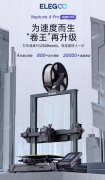 最具性价比3D打印机花落谁
最具性价比3D打印机花落谁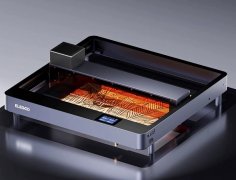 桌面级大尺寸+高精度雕刻
桌面级大尺寸+高精度雕刻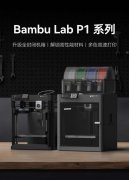 横评主流FDM打印机,看看
横评主流FDM打印机,看看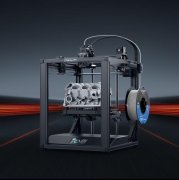 创想三维推出年度
创想三维推出年度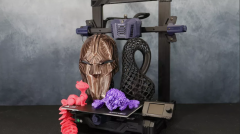 经济型FDM优品,A
经济型FDM优品,A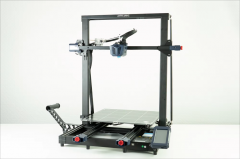 纵维立方Kobra Ma
纵维立方Kobra Ma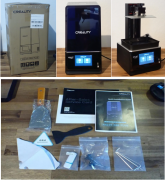 创想三维HALOT- O
创想三维HALOT- O

